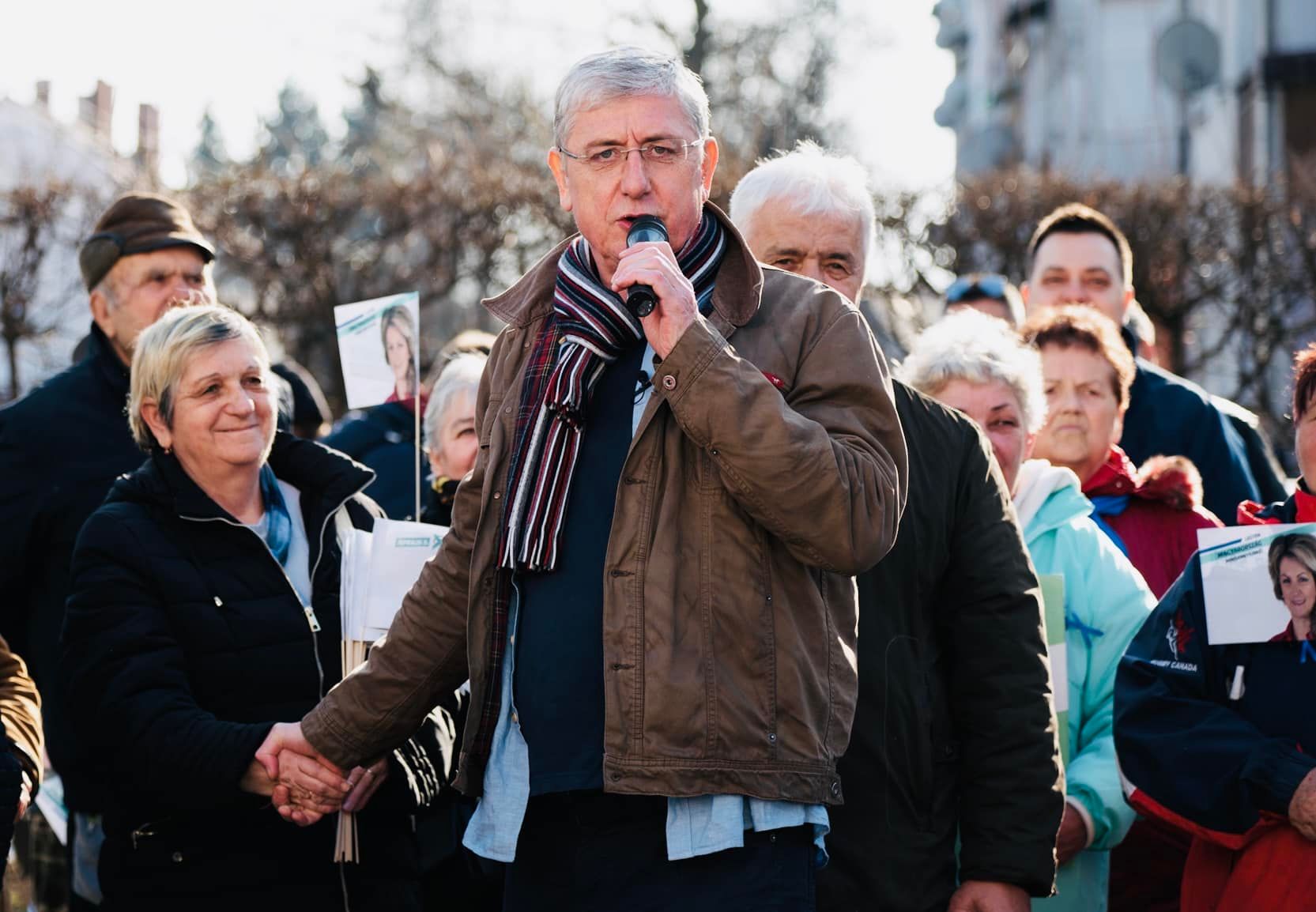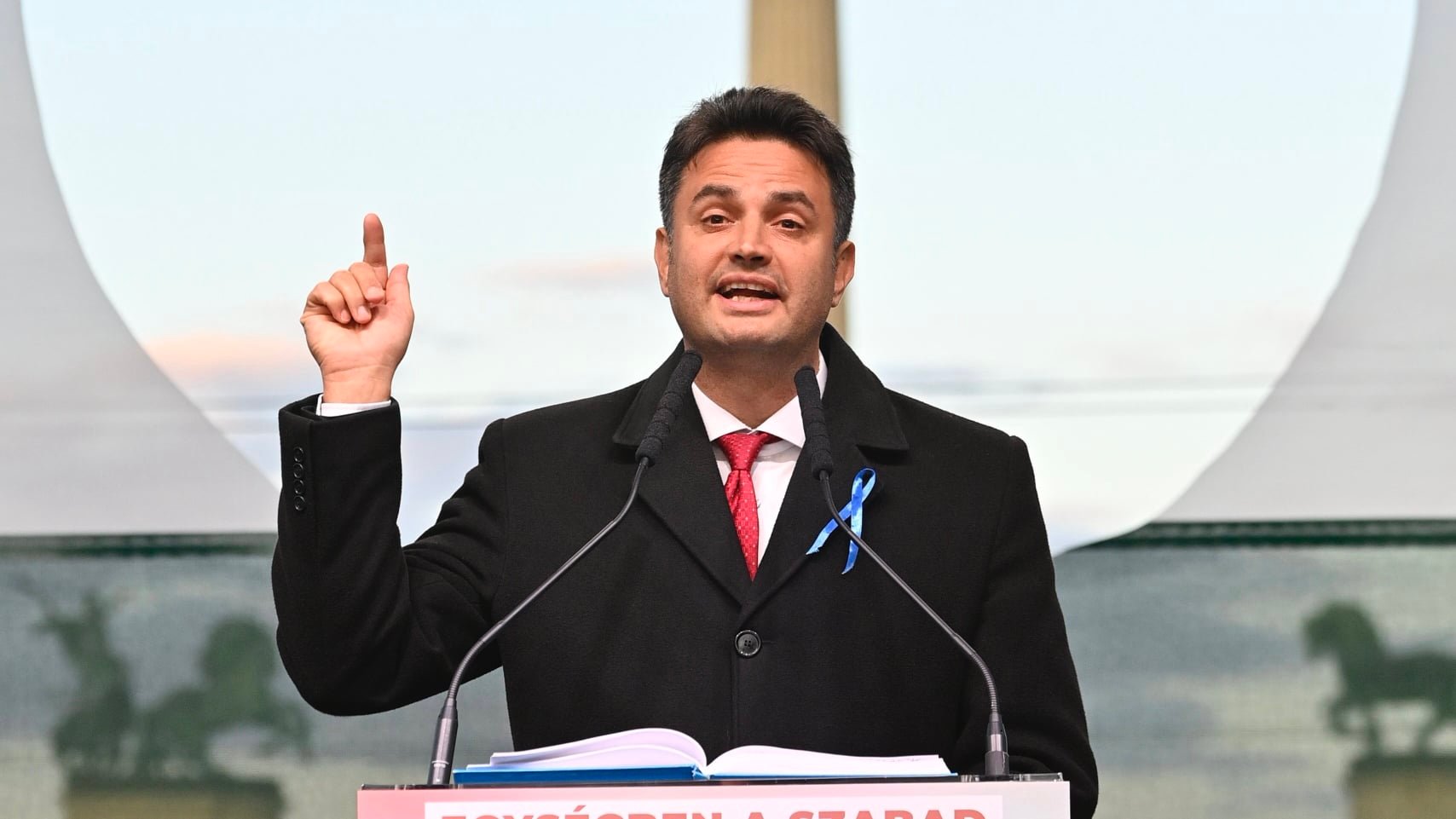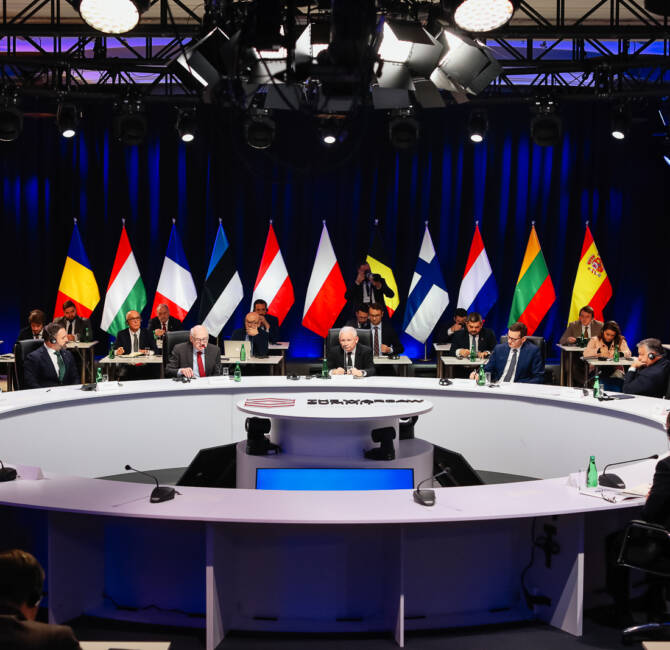Hungary – Many Hungarian and foreign observers were stunned by the Fidesz–KDNP coalition’s crushing victory in the 3 April parliamentary elections. The six-party opposition coalition lost nearly 900,000 votes compared to the cumulative results of those parties in 2018. Viktor Orbán’s coalition made progress everywhere and achieved a historic score, while the nationalist party Mi Hazánk, admittedly in deep disagreement with the government on some issues, but willing to vote with the government majority on others, entered Parliament. In internal politics, the game is more over than ever before: the government forces seem to be alone on the political stage. What happened? Why and how could Viktor Orbán manage to achieve such a success after twelve years in power?
The strategy of uniting opposition parties proved to be a fatal error
In 2019, answering a journalist’s question about what he thought of the opposition’s new coalition strategy, Prime Minister Viktor Orbán said:
“If the opposition takes this path, it will dig its own grave, and I don’t need to prevent that.”
This prediction proved to be correct, as the government coalition did not suffer by having to face an “all against Orbán” alliance. On the contrary, the latest electoral campaign only reinforced its own electoral base.
According to off-the-record information from analysts close to the government, pollsters already had data in their possession showing a considerable gap between the government coalition and the opposition at the beginning of March, shortly after the outbreak of the Russian–Ukrainian war, as the new situation was well managed in terms of political communication by Prime Minister Viktor Orbán.
The pollsters were careful not to publish the figures at the time, since neither political camp had any interest in making them known. The gap was ultimately 20 percentage points, or 1,110,936 votes. Even journalists opposed to the government’s policy since 2010 described this result as “brutal” for the opposition.
Within a political union, there is always a driving force whose apparatus is more powerful than those of the other groupings. In the present case those driving forces were former socialist Prime Minister Ferenc Gyurcsány’s Democratic Coalition (DK) and Péter Jakab’s Jobbik. For different reasons, these two parties were not in a position to lead the opposition and present their own candidate against Viktor Orbán. In the political game that followed the opposition’s primary and the appointment of a man with no party apparatus, Péter Márki-Zay, DK and Jobbik worked for their respective partisan interests, trying to obtain the maximum number of places on the national opposition list and supporting candidates bearing their colours in the constituencies.
The life of a political party – that is, its financial health – depends on the number of electoral mandates it is able to win. A political party must take this imperative into account first and foremost, and grandiloquent speeches of the “sacred union” kind are secondary and only made when they do not contravene the interests of the party professing them.
For Ferenc Gyurcsány’s DK, it is mission accomplished. It had only 4 MPs in 2018 and will have 16 in the new Parliament. Jobbik had 23 deputies in 2018 (the split that led to the creation of Mi Hazánk occurred after the 2018 elections) and will now have only 11. However, for a party that has gone through some mind-boggling reversals of political lines, it is not such a bad result.

Momentum does not have the same massive apparatus as DK and Jobbik, but it has strong networks in Brussels’ Euro-globalist circles. Momentum’s active role in the international criticism of Viktor Orbán’s Hungary has allowed it to be a key player in the opposition and thus to have been in a position to negotiate good places and ultimately obtain 11 seats in Parliament.
Momentum’s chairwoman, MEP Anna Donáth, was the only opposition leader who did not launch into a scapegoat narrative after Sunday night’s results. In her view, the responsibility is collective and no-one in particular should be assigned blame. This attitude shows that her party has much less taste for Hungarian partisan quarrels than for increasing its influence at EU level.
Contrary to what those with a superficial knowledge of the reality of political power relations and the life of political parties might think, strategies of union between parties often end up accentuating the differences, with the united political line becoming secondary, and in a full-fledged battle for places. This rule of political life was all the more true in the Hungarian case because it applied between backers of a list leader with no apparatus, no financial means of his own, and a highly problematic style. But then again, this union included Jobbik, a former far-right party that has converted to the liberal anti-Orbán forces, a curiosity that only adds to the weakness of the Hungarian opposition’s strategy of unity. It is indeed clear that the Jobbik voters of 2018 turned away in significant numbers from the united opposition list.
This rule is certainly counter-intuitive, but it played out in full in Hungary from the autumn of 2021 to the evening of 3 April 2022. Viktor Orbán knows this rule perfectly well, and he referred to it in his 2019 statement on the strategy of uniting the opposition forces being potentially counter-productive.
Cataclysmic erosion of the opposition electorate
Political observers and leaders often make the mistake of underestimating the average voter’s intelligence. They confuse the ability to put words to a situation with the ability to understand a situation in one’s guts. Even if not able to explain a situation, the average voter can often understand it, and his or her feeling is generally not very far from the conclusions that a good political analyst would draw.
In this case, with the opposition having lost nearly 900,000 votes compared to the 2018 election, it is clear that a significant number of voters felt perfectly well that the union of the opposition was not about strengthening any alternative political project, but about prioritising the interests of political formations over the interest of voters. All this, as the average voter understood very well, was served by Péter Márki-Zay, a man who had absolutely no say in the political-partisan shenanigans of DK, Jobbik and Momentum.
Without knowing all the ins and outs, the average voter – and in particular the average Jobbik voter of 2018 – understood that what was going on behind the scenes in the opposition was anything but an effort with the objective of being able to lead the country. The smoke and mirrors about the “vital need to form a bloc” against Orbán could hardly hide the parties’ game, which was clearly won by Ferenc Gyurcsány’s DK.
Hungarians prefer people to parties
This accurate sense of the reality of the union strategy was only amplified by the fact that Hungarian political culture tends to turn away from party logic and focus on personality issues. Hungarians have a personalist approach to political life.
As a matter of fact, with the exception of a committed nationalist fringe (about 5% of the electorate) and those who worship Western liberal democracy (about 5% of the electorate, mainly living in Budapest), Hungarians vote not on the basis of ideas or questions of principle, but on the basis of very prosaic criteria, including what a given candidate evokes to them.
As disturbing as this may be to a pure Westerner, and especially to a Frenchman, whose nation was built precisely on the decomposition of feudalism in favour of a centralised state, present-day Hungary cannot be understood without taking into consideration the remnant of feudal culture in Hungarian society. Hungarians vote for a leader, a lord, and they need to identify with him, their relationship to their leaders being above all personal.
Since the regime change in 1989, Viktor Orbán is the only leader who has been able to build, over the years, the image of a character with both the stature of a Hungarian lord and a political style that a majority of Hungarians understand.

This has nothing to do with the figure of a “little father of the peoples” or a “cult of personality” as some opposition journalists like to suggest. Of course, there is, especially in an educated section of the older female electorate, an unabashed adoration for Viktor Orbán (a phenomenon due to the romantic figure of the hairy Viktor Orbán of 1989). But this phenomenon is secondary and only marginally explains the Orbán dynamic.
What really matters is what Viktor Orbán’s person evokes in the Hungarian electorate. In summary, Viktor Orbán has everything that makes up the Hungarian character. Not all those who vote for him are necessarily seduced by his qualities; many are aware that his personality is also an emanation of some typical Hungarian defects. However, the most important thing is that they all see that Viktor Orbán is uncompromising and that he covers the whole spectrum of the Hungarian national character. For better or for worse, with all that this entails in terms of qualities and defects.
Hungarians can be very harsh on their own shortcomings as a people. They like to use self-mockery and, a few sentences later, display a barely overplayed national pride. They feel both immensely proud and at the same time deeply complexed and wounded. Viktor Orbán is excellent at playing on both levels. He acts as a Hungarian and thinks as a Hungarian. Voters sense this and see that he is the only one on the political stage who is a natural at this game. Privately, even Budapest’s Western European-oriented voters recognise all this.
Viktor Orbán is the only Hungarian politician who understands the Hungarian soul and stimulates it in his communication and political action. The day after the election results, Budapest lawyer György Magyar, who is close to the opposition, said: “Viktor Orbán is an expert on the Hungarian soul, he is the only one who knows it.”
Did Péter Márki-Zay merely amplify the defeat or cause it?
Fidesz communicators have used many different terms to describe their opponent Péter Márki-Zay: an “imported product”, a “vacuum cleaner salesman”, someone “semi-crazy”, a “televangelist”. Such attacks are normal during an election campaign, especially in Hungary, where defamation is the rule, and only the most sensitive feel annoyed by it. To work, however, these attacks must always be based on a shred of tangible reality.
In this case, it must be said that Péter Márki-Zay’s personality and style may have raised doubts. Unquestionably, there was nothing Hungarian about him. Was it a Magyarised American style or an Americanised Hungarian style? It is difficult to describe it, as it is so inconsistent. In any case, the government forces did not even have to pay particular attention to the candidate’s North American background or that of his communications consultant and business marketing professional Ákos Gurzó, who also spent many years in the United States. They were content to let him speak, as the opposition candidate’s style did not correspond at all to the Hungarian style and to the aforementioned national soul. Everything sounded wrong on Péter Márki-Zay’s lips, and it didn’t take long for Hungarians to notice.

As mentioned above, the negative Hungarian style that a political leader may display does not necessarily act as a deterrent. The most important thing is that this style is Hungarian and that the voters are able to identify with it, however unpleasant it may be for them. Péter Márki-Zay will have conveyed only negative traits, and moreover negative in a non-Hungarian way. Observing him interacting with provincial voters was enough to make someone who knows well the Hungarian people realise that.
Apart from that, it is hard to think of the opposition candidate as anything more than a political amateur. His campaign was a succession of heavy mistakes that even beginners in politics would not have made.
In an electoral campaign, the basic rules are the following: never shoot live on social networks in front of a camera without preparing your words, never go back on your words, never explain that what you said one day is not what you wanted to say, never say that you agree on certain points with your opponent, never ask for forgiveness, never insult voters (whoever they are), never give too much importance to your opponent by quoting his name at the end of each sentence, never say that there are traitors in your own camp, never underestimate your opponent, etc. If Péter Márki-Zay had aimed to make all these mistakes on purpose, he could not have done a better job than what he actually did throughout the campaign.
But are Péter Márki-Zay’s style and person really the only causes of the opposition’s crushing defeat? In the first part of this article, we saw that it was in fact the erroneous strategy of uniting the opposition, and also the political anomaly that Jobbik represents, that was the main cause of this defeat. The candidate’s personality certainly contributed, but it was not the central cause, as journalist András Hont, who cannot be suspected of pro-government sympathies, stressed the day after the elections.
Some remarks on the Budapest intelligentsia
The author of this article has numerous sources in Budapest’s intellectual, cultural and literary circles, which are mostly dominated by the liberal left and opposed to Viktor Orbán. Overall, the tone in these circles was everywhere the same in the wake of Sunday night’s carnage: “It’s Márki-Zay’s fault, he talked nonsense all along the campaign, he’s a moron.” These circles’ contempt for the person of Péter Márki-Zay is probably even more brutal than the detestation Fidesz’s hardcore voters have for the opposition candidate. The latter has thus managed to be the exact opposite of what the little people in Hungary are, while at the same time managing to behave in a way that is diametrically opposed to what the Hungarian liberal intellectual elites expect. It’s a real feat.
The most sincere and experienced of these liberal intellectuals, however, have departed considerably from this general tone and have come up with the following explanation: “We couldn’t win, we have nothing left to tell people, and it’s nice to be able to blame everything on Márki-Zay.”
Yes, the Márki-Zay disaster is very convenient for the liberal elites in Budapest. Thus, these elites do not need to explain why, after almost twelve years of Fidesz–KDNP government, Ferenc Gyurcsány’s political manoeuvres are still so important on the left, why the model of Western liberal democracy is totally outdated (which they know perfectly well), and above all why Viktor Orbán is the only one who has the resources to lead Hungary. These elites know all of what has been mentioned above, and they chose to ignore it and point the finger at Péter Márki-Zay.
As a matter of fact, these elites have never been so well-off financially as under Viktor Orbán.
They readily admit it in private: crying dictatorship is a very effective trade. They find it a clever way to make themselves known internationally, to increase their social reach and to develop their capacity to capture subsidies and public money. They do so in a country where they are officially not in power, and they like to pretend that the authorities stifle them, while their way of life is much more comfortable than that of the overwhelming majority of Hungarians, and they know very well that Budapest is in many ways a more pleasant capital to live in than the Western capitals, whether it be from the point of view of its atmosphere or of the freedom of speech that is allowed there.
The author of these lines has friendly relations with dozens of liberal intellectuals in Budapest. When he talks with them about the invented stories concerning freedom of thought being crushed by the Hungarian PM’s dictatorial power, it always gives rise to a loud burst of laughter, and it usually ends in ordering an extra round. Those who swallow the idea that Viktor Orbán crushes freedom of expression and oppresses liberal intellectuals do not know much about Hungary.
Certainly, these Budapest elites approve without saying so the words of Péter Ungár, a billionaire and politician member of the green party LMP, who is one of their own. These comments were made in the wake of Sunday’s results: “We have made a campaign for the winners of globalisation […] We do not understand the country.”
Budapest as the liberals’ playground, really?
Not surprisingly, the opposition got its best scores in Budapest. However, it did not win all the constituencies in the capital, as had been expected, losing two constituencies in eastern Budapest. Moreover, Fidesz–KDNP lost only by a small margin in several working-class districts and made significant progress in an even manner all over Budapest.
While the opposition remains in the majority in Budapest, it was down everywhere on its 2018 results. In many constituencies, the opposition lost a quarter of its votes compared to 2018, and in some cases more than a third of its votes. Its greatest losses occurred in the most working-class districts, while its smallest loss was recorded in the very wealthy second district of Buda (the right bank of the Danube), where its vote was down by 15.8% all the same.
In Buda, which was a Fidesz stronghold a few years ago, the government coalition no longer has a majority, but is once again scoring over 40% in all constituencies. All this means several things.
The opposition has lost ground among the less affluent electorate in Budapest, but also in the large and medium-sized provincial cities. In contrast to its breakthrough in the 2019 municipal elections, the opposition lost in all large and medium-sized provincial cities, except in Szeged and part of Pécs. The population of Buda is becoming more bobo-like, but Fidesz still gets a respectable score there. In conclusion: Fidesz is perhaps the only European party to accumulate considerable scores with both a very well-to-do electorate (the population of Buda) and with a strongly working-class electorate (in certain districts of Pest). What is left to the liberal left is only the parts of the big cities that have become more “bobo”. Fidesz is therefore a party that appeals to a very well-to-do electorate that has not been reached by the “boboisation”, as well as to the popular electorate, and obviously also to the provincial electorate. Fidesz–KDNP literally swept up the votes in the provinces, except in Szeged and in part of the centre of Pécs. The government coalition finished first in 3117 out of 3155 municipalities in Hungary. These are absolutely unprecedented results, and probably a record at European level.
The humorous party of the dog with two tails (MKKP) achieved its best scores in Budapest. These are undoubtedly votes from the young, who are the electorate that turned away from Péter Márki-Zay the most, according to a poll conducted by the left-wing Median institute on the day after the elections.
The impact of the Russian–Ukrainian war
In three articles published respectively on 10 March, on 16 March, and on 18 March 2022, we explained to what extent and in what way the Hungarian Prime Minister could potentially strengthen his electoral base due to the Russian–Ukrainian war. On election night, a security expert close to the government said in private: “The magnitude of the victory is due to the war.”
There is no need to reconsider the contradictory and senseless statements of prime ministerial candidate Márki-Zay concerning the Russian–Ukrainian war. The plainest voters quickly realised that it would have been imprudent, even dangerous, to entrust Hungary to a person as confused and unstable as Péter Márki-Zay. Again, this is not to say that a growing number of voters are singing the praises of Viktor Orbán. Voters simply saw in him a pragmatic leader who did not submit to political correctness and did not hesitate to state with determination that Hungarians’ interests and security come before those of the Ukrainians, which is an obvious fact that the overwhelming majority of Hungarians want to hear, regardless of what the self-righteous think.
The opposition’s strategy of shouting from the rooftops that Orbán is Putin’s man did not work, quite the contrary. Hungary is a NATO and EU member, and its economic ties are largely with Western economies. It has condemned the Russian operation in Ukraine, pleaded for an end to the war, and also supported the European sanctions against Russia. It is true that it does not want these to extend to the energy sector. As a matter of fact, Germany wants it even less, but this is more rarely mentioned. Hungarians are not attached to Russian gas, they are attached to cheap gas. If opportunities arose for them to obtain non-Russian gas at the same price, they would be the first to seize them. The opposition, so quick to pathetically defend the little people, has put ideology and its Western affiliations before Hungarians’ concrete and objective interests. It is this attitude that did not go down well on 3 April, and which is another reason for the anti-Orbán coalition’s resounding failure.
What Mi Hazánk’s entry to Parliament means
On 25 January, we mentioned the possibility that the nationalist party Mi Hazánk of Ásotthalom mayor László Toroczkai might get more than 5% of the national vote and enter parliament. This is what happened, Mi Hazánk’s party list having obtained 5.89% of the poll, that is to say 332,323 votes.
Here is what we wrote then:
“The cordon sanitaire that has long prevented this party from claiming respectability is seriously damaged. In private conversations in Budapest, a vote for Mi Hazánk is no longer seen by cosmopolitan leftist voters as the mark of a despicable and condemnable movement prone to crypto-fascist romanticism, but as a choice that has become politically understandable and even morally acceptable. The first to have raised, as early as last autumn, the possibility of a rise of Mi Hazánk were none other than the liberal journalists András Hont and Zoltán Ceglédi, known for their sceptical stances on Covid issues. On 15 January, left-wing lawyer and former LMP leader András Schiffer spoke in Kossuth Square at a demonstration against compulsory vaccination of teachers, an event that also included a speech by journalist Árpád Szakács, who used to be a supporter of Viktor Orbán’s government, but is now close to Mi Hazánk. ”

When the government then decided in mid-February to remove the bulk of the public health measures, it became fashionable to say that this had definitively dashed Mi Hazánk’s hopes of getting into parliament. The outbreak of the war between Russia and Ukraine on 24 February further accentuated the exit of anti-Covid health policy from the political-media scene. Many observers thought that the game was over for Mi Hazánk, that László Toroczkai and his party would not enter parliament, their main campaign theme having been relegated to the background by international events. However, those observers failed to take into account several groundswells that obviously did not disappear with the political and media reversals that occurred in February.

To begin with, if at first sight Mi Hazánk did not succeed in exciting the crowds with its positioning on the Russian–Ukrainian question (unconditional defence of Hungarian interests, questioning of NATO, opposition to EU sanctions), it should be noted that this positioning pressed on still open wounds: those of the economic, social, and also psychological damage left by the public health measures. Indeed, the nationalist party openly drew parallels between the health issue and the Russian–Ukrainian war, explaining that in the end it is always the Hungarians who pay the bill for wars of interests taking place beyond Hungary.
Mi Hazánk succeeded in conveying the idea that the sanctions approved against Russia, which have terrible consequences for European economies, are in fact a repetition of the public health measures.
The Hungarians are well aware that the opening of the fiscal and monetary floodgates in the year leading up to the elections will not last, and that the bill may be high. This is the wound that Mi Hazánk skilfully pressed: the one left by interests beyond Hungary that have undermined Hungarians’ freedoms and economic health.
Second, many observers were lulled into believing that the Jobbik electorate (more than one million votes in 2018, before Mi Hazánk was created out of a split within Jobbik) would shift unimpeded to the united opposition. This clearly did not happen, and of the 332,323 votes obtained by Mi Hazánk, many are probably from former Jobbik voters who did not like the party’s centrist turn. Those who accuse Mi Hazánk of being a “satellite party of Fidesz” – mainly Jobbik members who still feel angry at László Toroczkai for causing the split – should, therefore, rather question their mistaken strategy of uniting the opposition against Viktor Orbán. A strategy which, as we have seen above, is a central cause of the large victory of Fidesz–KDNP, but also of the entry of Mi Hazánk to parliament.
Third, and this point refers to the paragraph above headed “Hungarians prefer people to parties”, Mi Hazánk did not make the mistake of running an overly abstract campaign of general slogans. As relevant as campaign slogans may be, they are never enough in an election campaign, especially in Hungary. Mi Hazánk, a party that was censored on social networks a few days before the elections, had made the right choice of personalising its campaign from the beginning of January by putting forward the face and the person of László Toroczkai, but also of Dóra Dúró, respectively first and second on the national list. Unlike Péter Márki-Zay, these two personalities really evoke something in the Hungarian imagination. Hungarians are sensitive to what these two people carry with them.
Toroczkai evokes the figure of the man from the puszta (the Hungarian plain east of the Danube, a region charged with tragic romanticism in the identity and history of Hungary), both combative and physically imposing, but also imbued with historical knowledge and gifted with a sensitivity to his country’s traumas. All this while emanating an image of typical Hungarian resourcefulness. In short, he refers in a certain way to the image of the Hungarian betyár (brigand of the plain in the 19th century, a kind of Robin Hood in the Hungarian imagination). Whether or not you like it is not the point. The main thing is that Laszló Toroczkai corresponds well to certain parts of the Hungarian style. Dóra Dúró is a mother of four children who is adamant about protecting families. In 2010 she was elected an MP as a 23-year-old, and has the image of someone who puts the protection of her own children and the protection of her country on the same level.
Voters who do not vote for Mi Hazánk, but who nevertheless have a good grounding in Hungary’s soul and history, are well aware that the two major figures of the nationalist party stimulate many aspects of the Hungarian unconscious. That kind of stimulation did not work at all in the case of Péter Márki-Zay.
As a general conclusion, it is the accumulation of all the elements mentioned above and their simultaneity which led to the large victory of Fidesz–KDNP on 3 April 2022. All the analyses about the “government propaganda machine” that artificially led to Viktor Orbán’s re-election are pure fantasies. As for those who complain about the Hungarian electoral system, they should have a look at the British electoral system, as it would have allowed Viktor Orbán to achieve an even greater majority in parliament with the same votes. And what about the French system, thanks to which, in 2017, a president was elected “against hatred and totalitarianism” in the second round, while his electoral base in the first round was a lot weaker than Viktor Orbán’s? Hungarians are neither stupid nor fools. Their history has taught them not to be under any illusion about what they are told. They are far more expert in understanding manipulation than Westerners are. As a whole, Hungarians want very simple things: peace, calm, respect, and security for their country. They felt very keenly that it was certainly not the “united” opposition that could bring them all this. It is above all on this basis that they made their choice on 3 April.




